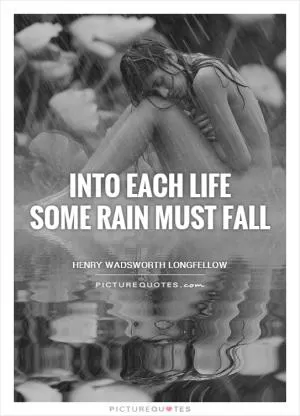There is no grief like the grief that does not speak

There is no grief like the grief that does not speak
Henry Wadsworth Longfellow, one of the most beloved American poets of the 19th century, understood the power of grief and the importance of expressing it. In his poem "The Rainy Day," Longfellow writes, "Into each life some rain must fall, / Some days must be dark and dreary." This sentiment reflects the idea that grief is a natural part of the human experience, and that it is important to acknowledge and express our feelings of sadness and loss.Longfellow's own life was marked by tragedy and loss. In 1861, his second wife, Fanny, tragically died in a fire at their home. Longfellow was severely injured trying to save her, and he was left devastated by her death. This profound loss deeply affected Longfellow, and he struggled to come to terms with his grief. In his poem "The Cross of Snow," Longfellow writes about the enduring pain of losing a loved one, describing it as a "cross of snow" that he carries with him always.
Longfellow understood that grief is a deeply personal and individual experience, and that it can be difficult to put into words. In his poem "The Grief of the People," Longfellow writes, "There is no grief like the grief that does not speak." This line captures the idea that when we keep our grief bottled up inside, it can become overwhelming and all-consuming. Longfellow believed that it was important to express our grief and to share our feelings with others, as a way of processing our emotions and finding healing.
Longfellow's poetry continues to resonate with readers today because of its emotional depth and universal themes. His exploration of grief and loss reminds us that it is okay to feel sad and to mourn the things we have lost. By acknowledging our grief and sharing it with others, we can begin to heal and find solace in the knowledge that we are not alone in our pain.












 Friendship Quotes
Friendship Quotes Love Quotes
Love Quotes Life Quotes
Life Quotes Funny Quotes
Funny Quotes Motivational Quotes
Motivational Quotes Inspirational Quotes
Inspirational Quotes